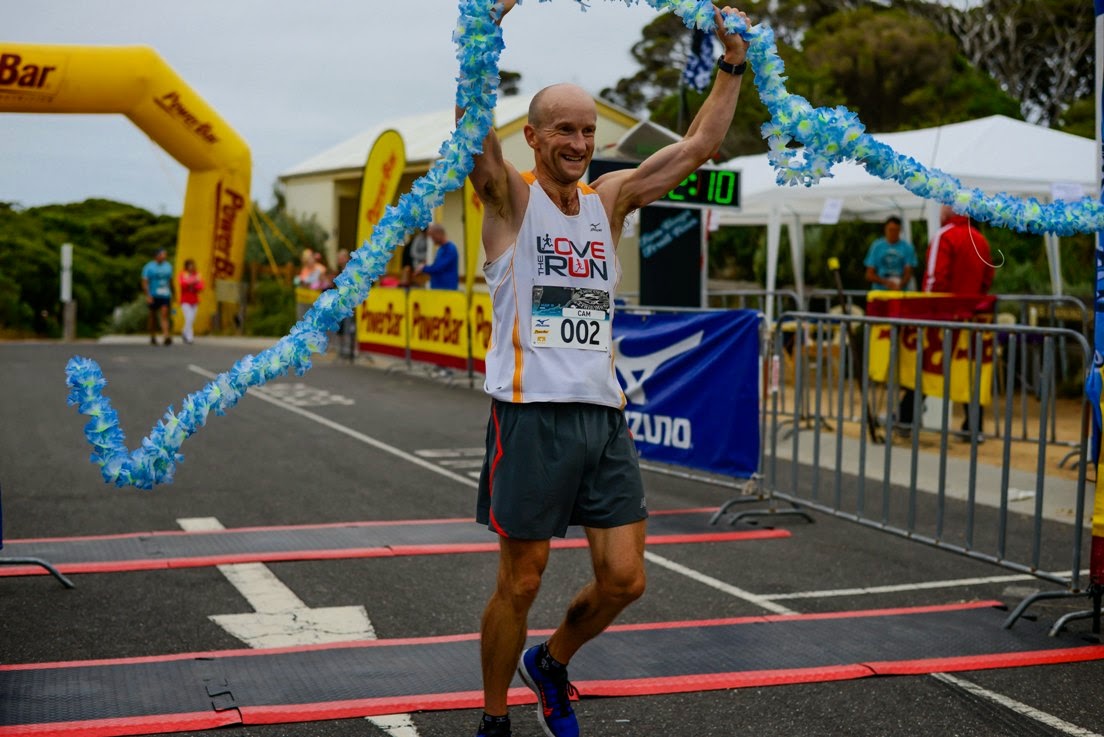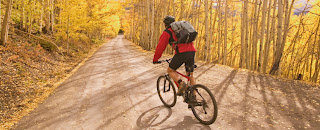Having done each race once before, I was keen to go back this year with the benefit of course familiarity and see what I could knock out. I had actually wanted to do Six Foot again two years ago – my first attempt was four years ago – and trained my arse off in every way getting super fit for it, only for flooding to see it being cancelled two days prior to the race. Bummer. Major bummer.
This time around things were different with Eddie being on the scene making it a hard deal to head off to the Dandenongs for about half a day each weekend to hit the hills. So a different approach was called for using the short hills near home and working on my speed hoping this would be a good alternative. I also wrote out a 12 week plan for myself, something I never usually do – I prefer to keep things flexible to allow for circumstances – and was happy how it looked.
So from about November onwards I started ramping things up and ticking off the sessions with some great running. I was doing about 130 kms or so a week, with plans to build on that, and my form was pretty good – not super fast but strong.
The first test came with Two Bays on 12th January, just a week after my first (and only) foray to the Dandenongs for a great session – I was flying up the hills which is good since the race starts with a 300m ascent in the first 3km over Arthurs Seat. On race day I was jumping out of my skin during the warm-up – I was ‘on’ - which was just as well since a key rival over recent years, Barry Rogers, was also in the field. Barry is about my age (44), a top guy, and just as tough as nails. Each time I see him on the start line my stomach churns since I know it will take a gut busting effort to race him – we’ve pushed each other to big PBs in several races.
And so it turned out again on that day – side by for the first km or so, then I pulled away up the hill, before he caught me down the other side. Then we ran together for km after km after km, through the gates, over the boardwalk, along the sandy tracks and around turns. I began to wonder what we should do if we were together at the end – I can’t sprint for nuts, but my competitive spirit thought it should go to the toughest anyway...would it be me? We barely shared a word, only heavy breathing, but I was still feeling really good and in leading all the way along the endless single-track could control the pace...not letting up for a moment, and hoping Barry would drop off. Like I said, tough as nails.
At the final road crossing with 5km to go Barry slowed a little for a drink and I kept pushing...he was gone. In twisting and turning tracks we were quickly out of sight of each other which could only help me...but I was tiring and just looking for the Cape Schanck lighthouse at the finish. Finally it came and I was still clear – what a thrill to win, which I really enjoyed. Barry came in 17 sec later. I was stoked to run so well – fourth fastest ever (1:52hr) on the course – and was excited about more improvement with 8 weeks still until Six Foot. I was rooster for a day.
Training kept on going well, following the plan and bumping mileage up to 140-150km per week, although very few hills. Yes, I was tired a lot but still getting some good sessions done with a plan for doing a 15km road race in late-February where I had it in mind to aim for PB (set in 1987) – I felt I might be a reasonable chance.
Then things started to unravel. In early February we had a tummy bug / gasto go through our house – I just had a pain in the guts for a while, Eddie did a big one-off spew while Andrea copped it worst with vomiting and the works. While my sore tummy eased, it drained me of all energy for days – I felt like sh*t.
With tummy better I got in a few OK sessions, including two trips to the local athletics track for some fast running...which led to another problem, this time straining and bruising my right foot. So two-and-a-bit weeks of very interrupted running and we are now down to two weeks pre-Six Foot and the 15km road race I was planning. I didn’t do it, only being able to jog around slowly...my foot was at least improving. But my legs felt crap, perhaps from the bike riding I did while not running, or perhaps lingering effect of the tummy bug, or loss of fitness.
I had a final small window for in a couple of sessions to get some zip back in my legs and hopefully some confidence in my running. They went OK, but they didn’t come with the ease I wanted them to and my legs didn’t feel great, in fact, were tight, tired and heavy – not a good sign one week out. My legs improved a bit during race week, but generally felt pretty crap...and I was quietly worried about how they would be on race day.
Friday came around and we packed up and headed for the plane to Sydney, then hire car drive to Katoomba. The Blue Mountains are absolutely stunning and beautiful, with Katoomba and neighbouring Leura towns being the key attractions perched right on the top of cliffs with million dollar views – great for tourists, and great for trail running in the valleys below.
But this leg of our trip (plus holiday after) was for the business of running and so early on Saturday we made our way to the Explorer’s Tree marking the start of the Six Foot Track, 45km to Jenolan Caves. The field entered was a cracker headed by London Olympic marathon runner Martin Dent plus a host of very competitive runners – on paper a top-10 finish would have been a challenge if they all turned up.
I thought I felt OK during the warm-up; not near as good as for Two Bays, but it was a long race and anything can happen...I was hoping the race start would shake me out of my funk. We lined up for the treacherous start down a narrow, steep, rocky track for 500m or so before turning onto even more treacherous steps for another 2km or so. My technical running is not great and was quite a grandpa down this section just to avoid falling over and/or spraining my ankle.
The pace up front was fast and furious, and it seemed like there were dozens ahead of me – all out of sight. When the track flattened out and opened up I could see about 4-5 runners ahead, including first and second from last year so concluded that I wasn’t doing too badly after all. I was running OK, passing a couple of people, but not with the ease that I would have liked this early on.
The first major milestone is crossing Cox’s river at 15.5km, and as I closed in could see 4 runners within 20 seconds ahead – some of the really competitive runners in the race. This is the river that was flooded 2 years ago, but today it was about waist height...except that I tripped and almost went right under. Out the other side it turned out that the 5 of us covered 3rd to 7th place, which I was really surprised about. I had tried to run controlled down to the river – it is easy to blow your race in that primarily downhill section – and got there in 64:49min, only 30sec slower than last time, four years ago, which was OK.
Out of Cox’s river it is straight up the first of two really hard climbs, 4km averaging 10% or so with some steeper pinches. One guy, Mark Green, cleared out ahead but local legend and 2011 winner Andy Lee was just ahead while I ran alongside last year’s winner Tony Fattorini letting him set the pace since I knew he is good on the hills. The fifth runner in our 'group', Sam Walker, dropped back. Over Mini Mini saddle and down a steep quad busting descent to Alum river I pulled away from Tony into 5th just 50m or so behind Andy. I was running solidly and had got no worse so was hopeful that feeling would remain.
The next big climb is up to the Pluviometer timing check at 26km mark, another 4km climb at 10% or so. This was a slog. Andy was still just ahead but I couldn’t see anyone behind during the climb...it was just muscle straining effort with each step and I was dragging my arse. Last time I raced I got to Pluvio in 2:02hr so I was watching my clock to see how I was going. 2:02 came and went and the check-point was not in sight. It took another 4min to get there, so well outside my goal pace - it was the beginning of the end.
At the aid station I took sports drink, coke, a caffeine gel, and prayed for a miracle. The section after Pluvio is a lot flatter in comparison but still goes up, and up, and up, in little increments for about 8-9km – soul destroying and why the old timers say the race doesn’t really start until here.
I was spent from the hills and my lack of visits to the Dandenongs; my legs were falling back into the funk of the last few weeks – tight, tired and just not moving. I ran on as best I could doing some mental arithmetic about my finish time knowing it would be outside what I dreamed of but maybe it would still be respectful. I stopped at each aid station drinking more coke hoping it would pick me up, waiting for a wall of runners to come from behind which they finally did one-by-one. I hung onto top-10 for quite a while but the prognosis was looking worse and worse, and nothing was helping...least of all downhills because my quads were hurting more and more.
Into the last 10km and I started walking the up the hills, down the stairs and very nearly the flat sections. I had a quick chat at each aid station, which was nice to be able to thank them, and laughing when they said “you’ll be happy it’s mostly all downhill from here”...no I wasn’t!!
I lost count of how many people passed me, and how many times I walked...it was all painful, especially the steep and rocky last 3km down to the finish. Maybe running backwards down would have been easier? The last 10km took well over 1hr...ouch!!
The finish in front of Caves House is great, like an amphitheatre from where you can hear the cheering and announcer over the last km or so. It takes a little while to come around the corner to see the roof as you turn onto a smooth path to zig-zag down to the finish line – a welcome relief. As I came down the path I wondered where Andrea and Eddie would be, hopefully nearby. Down the final steps I saw Andrea just ahead with a little blonde head bobbing over the barrier beside her. This was an opportunity too good to miss – I reached over and picked him up, over and down on his feet beside me. I held his hand as we ran the last 20m to the finish.
So yes, I had a shocking race. There might be a host of reasons – the last 5-6 weeks in particular did not go to plan one bit. The race ended up feeling like the crappy training runs I had during that time. My main feeling was relief it was over – I’ve put so much in the preparation for this race each time, which is both mentally and physically draining. This time I knew that I lacked the big hill running that is so important to do well. With another kid on the way I can’t really see that I’ll be able to do those runs – it just wouldn’t be right from a family point of view. I think I prefer road races – they are more intense, but more tangible in ways that agrees with my mentality. Six Foot Track beat me like a feather duster this year.






